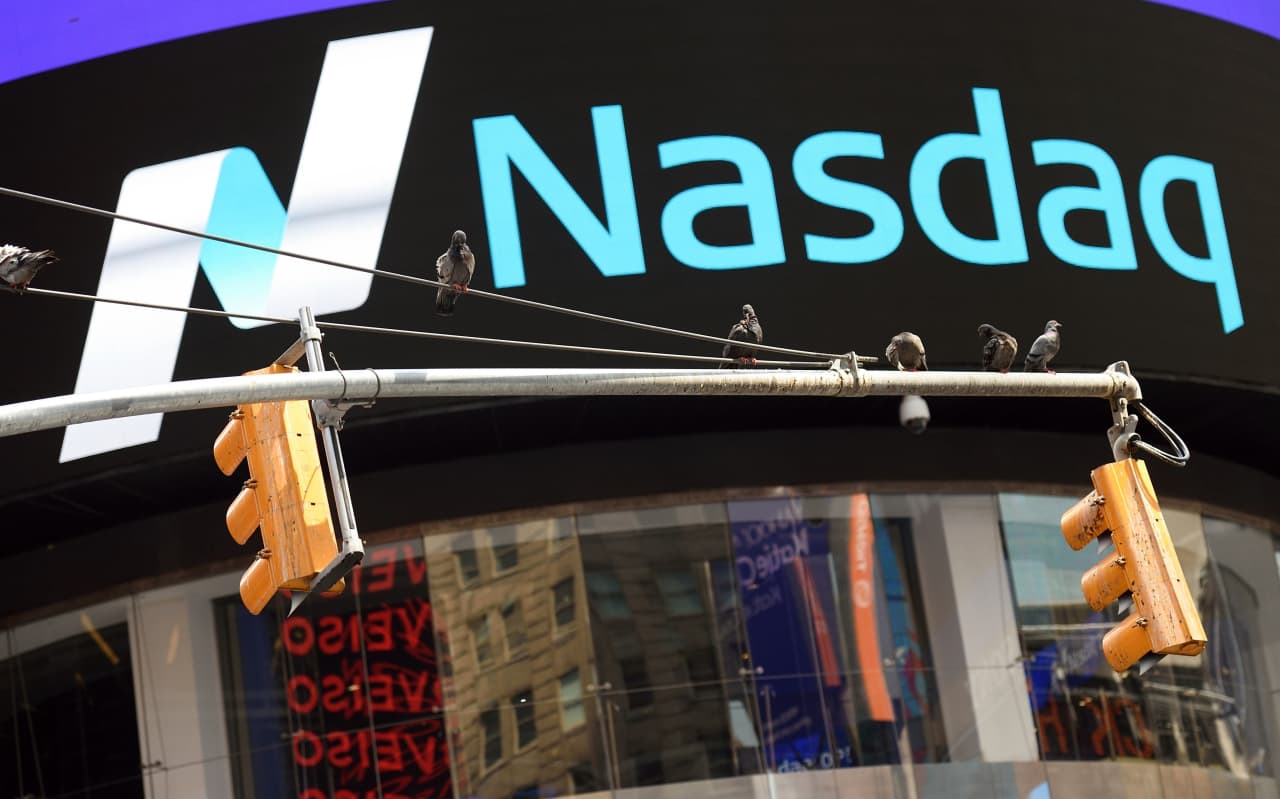S&P 500, Dow Jones waver as tech rally fades on rate-cut uncertainty

U.S. stocks were higher on Thursday, with technology stocks trimming some of their earlier gains in afternoon trading after Atlanta Fed President Raphael Bostic urged policymakers to proceed cautiously toward interest-rate cuts and said he sees a first rate cut happening in the third quarter of 2024.
What’s happening
-
The Dow Jones Industrial Average
DJIA
was down 8 points, leaving it nearly flat, at 37,259. -
The S&P 500
SPX
edged up 2 points, leaving it nearly flat, at 4,751. -
The Nasdaq Composite
COMP
gained 58 points, or 0.4%, to trade at 14,911.
On Wednesday, Dow industrials fell 94 points, or 0.3%, while the S&P 500 and Nasdaq Composite each shed 0.6%.
What’s driving markets
U.S. stock indexes were struggling for direction in volatile trading on Thursday. The large-cap benchmark S&P 500 and the tech-heavy Nasdaq Composite were trimming their earlier gains in the afternoon’s trading, while Dow industrials were struggling between gains and losses as healthcare stocks sputtered.
Atlanta Fed President Raphael Bostic on Thursday laid out the case for the central bank holding off from any interest-rate cut until the third quarter of 2024.
Since the last Fed meeting in December, markets have priced in the first interest-rate cut coming in March, according to the CME FedWatch Tool. However, that timing is in doubt this week after several Fed officials pushed back on the notion of rapid rate cuts.
As a result, both stock- and bond-market investors are now speculating that the central bank will be in no rush to cut borrowing costs as the economy shows signs of resilience. The 10-year Treasury yield
BX:TMUBMUSD10Y
has jumped more than 30 basis points to around 4.14% this week, according to FactSet data.
Yields continued to pop higher Thursday after data showed the number of Americans who applied for first-time unemployment benefits last week fell by 187,000 to the lowest level in 16 months, indicating that layoffs remain near record lows. Economists had forecast new claims in the week ending Jan. 13 to total 208,000.
U.S. stocks have also endured a choppy start to the year, with the S&P 500 pulling back from near-record highs.
“The story this week continues to be robust economic data, and how it may keep rate cuts on ice for a while,” said Chris Larkin, managing director for trading and investing at E-Trade from Morgan Stanley.
“Until we start to consistently see softer numbers, especially in the labor market, the Fed will likely stick to its higher-for-longer stance,” he said.
However, there was some good news coming from technology stocks on Thursday. Shares of Taiwan Semiconductor Manufacturing Co.
TSM,
which produced results that beat analyst forecasts, jumped 7.2%, while the VanEck Semiconductor ETF
SMH,
which tracks 25 of the largest U.S.-listed chipmakers including Advanced Micro Devices
AMD,
and Nvidia
NVDA,
jumped more than 2.5% to hit an all-time high, according to FactSet data.
Meanwhile, BofA Securities analyst Wamsi Mohan weighed in with a newly upbeat view of Apple Inc. stock
AAPL,
Thursday, upgrading it to buy from neutral amid longer-term optimism about the iPhone business. Apple shares were up nearly 3%, on track for their largest one-day advance since May 5, according to Dow Jones Market Data.
But healthcare stocks were a drag on the market on Thursday and were pulling down Dow industrials, with shares of UnitedHealth Group
UNH,
off more than 2.5%.
The drop came after fellow health-insurance giant Humana Inc.
HUM,
cut its full-year 2023 earnings guidance, flagging rising medical costs and slower-than-expected 2024 Medicare Advantage enrollment growth. Humana shares fell 11.8%, while healthcare was the worst-performing S&P 500 sector and down 0.8%.
In other economic data, the Philadelphia Fed said its gauge of regional business activity inched up to negative 10.6 in January, from negative 12.8 in the prior month. Any reading below zero indicates deteriorating conditions.
Housing starts fell to a 1.46 million annual pace from 1.53 million in November, the government said Thursday. Economists had expected a rate of 1.43 million.
Jamie Chisholm contributed









